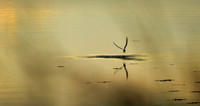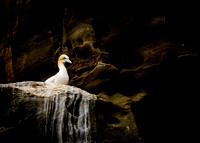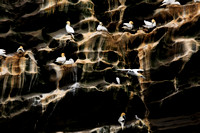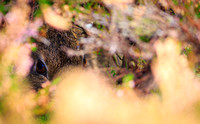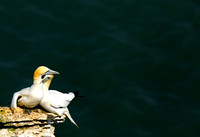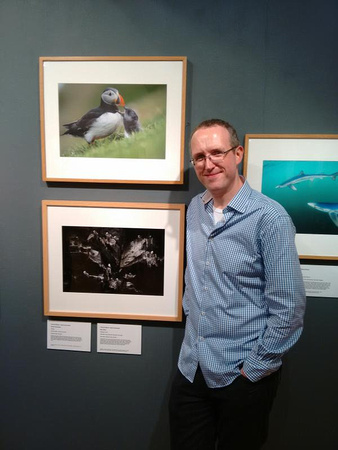I think I may be getting slightly obsessed with Mountain Hares!
Evening all! I hope everyone's looking forward to the long Easter weekend. While not quite rabbity, they're close enough that this gives me a good excuse to talk about an animal that I'm slowly becoming somewhat obsessed with, given that I'm fortunate to have them on my doorstep. Namely, Mountain Hares. I've talked about them before in this blog and aside from the highlands of Scotland, the only place they are found south of the border is in small enclaves in the Peak District.
Hardier than their lowland brown hare cousins, they're to be found high up on the moors and that in itself forces any wildlife photographer to put in some effort. It took me many visits, scouting out different locations in all weathers before I found a good population. And from observations over time, I knew that they are in their iconic winter coats from about December to March, before they start to moult back into their more drab brown fur, which doesn't leave a great window of opportunity, especially as the weather can be somewhat extreme up on the tops and even more so when you've only got weekends in which to work.
I had some good results with them a few years ago, but last year was disappointing. Their numbers just seemed to have crashed and that worried me. They are often the target of shooters, trying to sanitise the moors to anything other than grouse. So it was with some trepidation that I gathered up my 15 kilos or so of gear and started the hour long hike up the hill from where I parked the car, hoping for better results this time.
On getting to where I'd had good results in the past, an hour or so of combing the ground was proving fruitless, so I decided it was time for a sit down and elevenses, and a bit of a think.


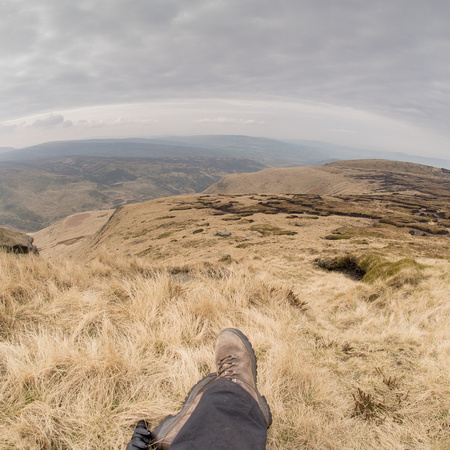

Fieldcraft plays a big element in wildlife photography and even though I'm an amateur, it's still something I try and pay good attention to in my work, so I'd noticed that the wind was blowing in from a slightly different direction from normal. Hares, while not feeding or off chasing the girls, often lay up in forms, or scrapes, in the ground with their backs to the wind (they're not daft...)
So I decided to take a punt and headed down the other side of the hill away from the prevailing wind, in case they'd moved on. Result!
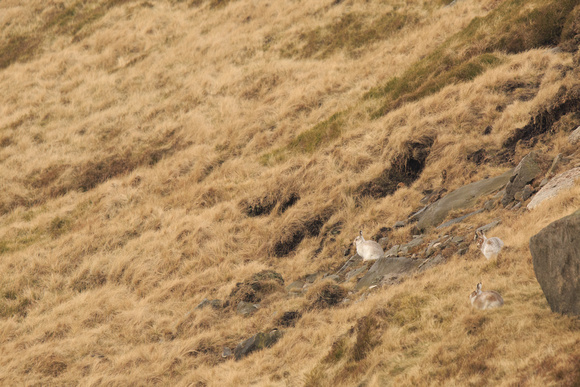

Okay, so you've found your hares. What next? I then spent 15 minutes or so circling around to approach from the other side where there was a bit more cover to break up my silhouette.
I've found that it's all but impossible to completely sneak up on these guys but by doing a bit of belly crawling from 30 or so yards out, it seems to make me look less threatening. Even then, they seem to fall into two camps; those that are still not happy and take off, but occasionally, just occasionally, you'll get lucky and find one that is tolerant..
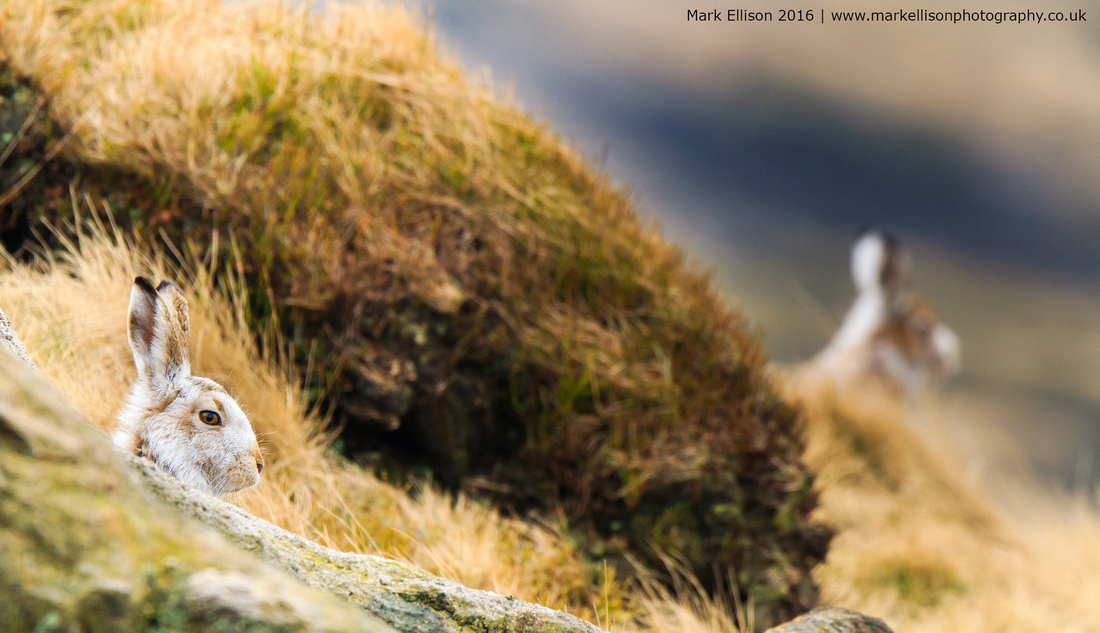
 I decided to chance my arm with these two. The far one decided he wasn't interested and wandered off but the closer fellow, he seemed happy to stay put the closer I got...
I decided to chance my arm with these two. The far one decided he wasn't interested and wandered off but the closer fellow, he seemed happy to stay put the closer I got...
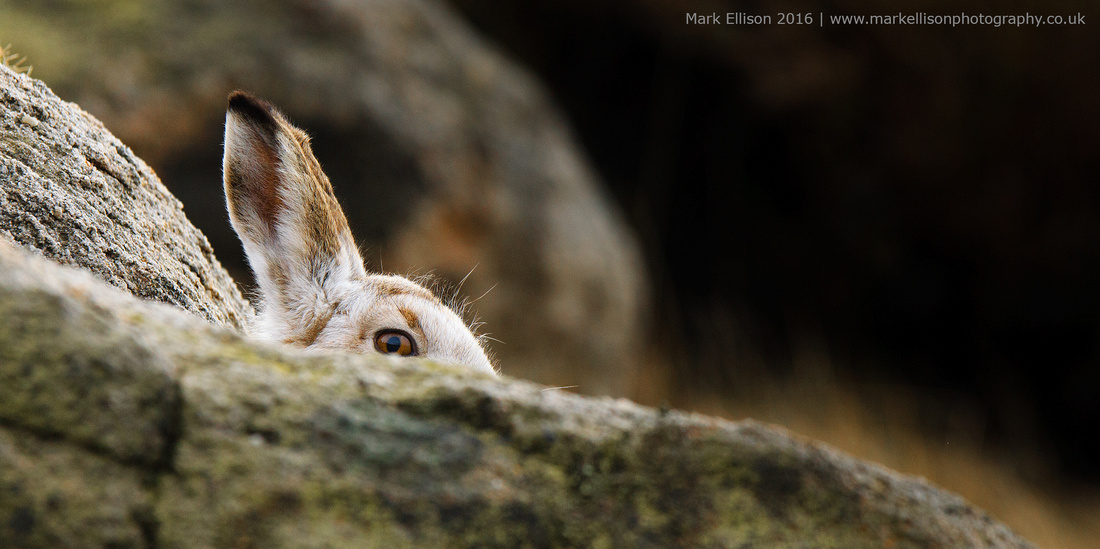
 Now, it's at this point that it's heart in the mouth time and when I feel my heartbeat start to increase. I slowly edged around the rocks, expecting him to bolt at any time.
Now, it's at this point that it's heart in the mouth time and when I feel my heartbeat start to increase. I slowly edged around the rocks, expecting him to bolt at any time.

 And this is when I hold my breath. But even then, experience tells me it's more than likely going to be OK. He's seen me, he's not run and he's clearly happy to tolerate my presence. Even so, it was a good ten minutes or so of not moving before I was happy he wasn't stressed or worried before I dared moved again.
And this is when I hold my breath. But even then, experience tells me it's more than likely going to be OK. He's seen me, he's not run and he's clearly happy to tolerate my presence. Even so, it was a good ten minutes or so of not moving before I was happy he wasn't stressed or worried before I dared moved again.
Amazingly, he then settled back to sleep for a bit before having a yawn and stretch and going off for a bite to eat.


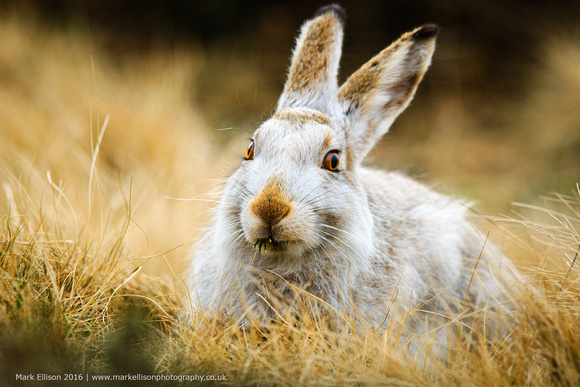

It's days like these that remind me why I adore what I do. The pressures and worries of normal life melt away, spending an hour or so in the company of a truly wild animal going about it's life, happy to accept your presence, with just the wind and the occasional call of a grouse for company in the far distance.
And after he'd given me so much, it was my responsibility to back away and leave him be.


Back to the Mara - Part 4
Where does the time go? It's been quite a while since I last posted a blog update, and since I've been up to a few things since last year's Kenya trip, I think it's time to motor on through some more Mara updates to try and catch up to where I am now!
So, where were we?
In the previous post, I talked about kit, techniques and practical stuff so for this time it's back to the events and wildlife of the trip itself. The morning after my memorable leopard encounter dawned particularly early. Actually, I'm getting ahead of myself. It started before dawn. Rewinding to the evening before, Paul, our guide and resident pro photographer had noted that we were in for quite a clear night, which might make for some great Milky Way photos, as the main things you need for that are big skies, a lack of artificial light and some interesting foreground (more on that shortly...). All things the Mara has in abundance.
So, numbers were taken for early risers and we were packed off to bed with instructions to set our alarms for 4:30am...
Groggily stumbling out of bed a few hours later, I stuck my head out of the tent to be rewarded with as clear a sky as you could hope for. After fumbling around for some clothes, I collected my kit and head torch and headed up to the main tent.
While waiting for the few other hardy souls to turn up, I grabbed a quick test shot by the chairs that had surrounded our camp fire the night before. Promising...
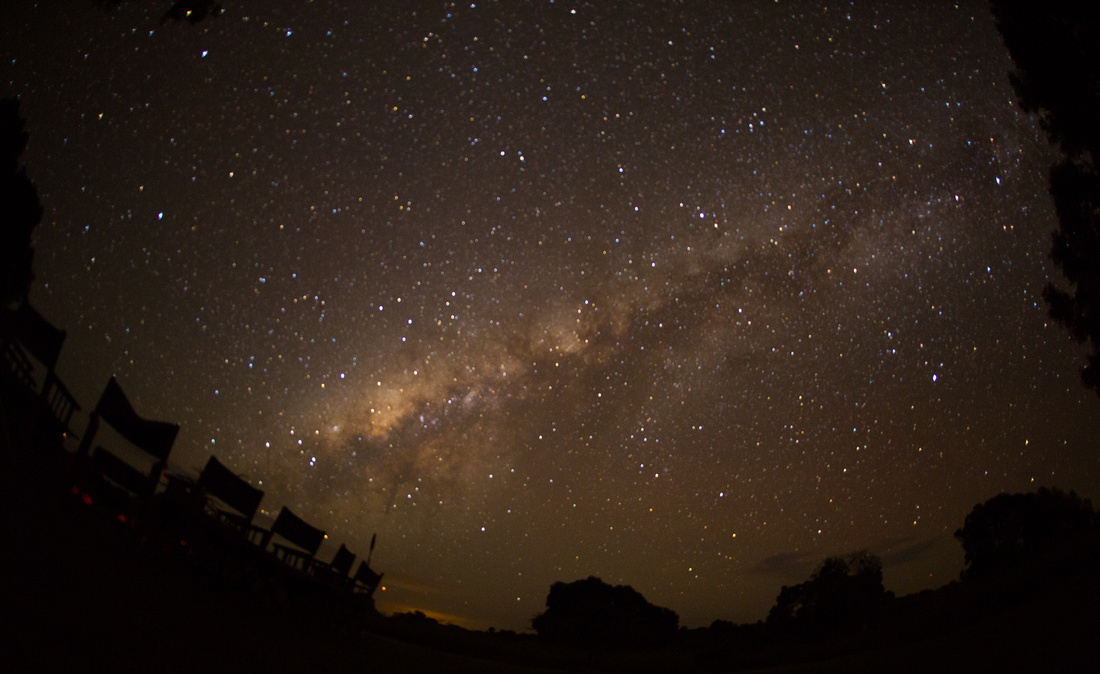

By now, we'd be joined by the other early starters so we piled into one of the landcruisers and off up the slope out of the back of camp. Paul had his eye on a lone tree in a clearing a few hundred yards from the edge of camp. As we arrived, bouncing along the track, the landcruiser's headlights picked out the unmistakeable shape of a massive male lion, uncomfortably close and watching us. After a brief pause, Paul said "right, come on!" (or words to the effect). We all piled out, headed over to our planned spot and set up tripods.
Up until now, we'd had the relative comfort of the vehicle headlights and our torches for security, but then it was "lights off!" for the long exposures and we were plunged into darkness. Longest few minutes of my life...
Suffice to say, I didn't get eaten and the end results were more than worth it. Our Masai guides made for an interesting shot and we were even rewarded with a shooting star.
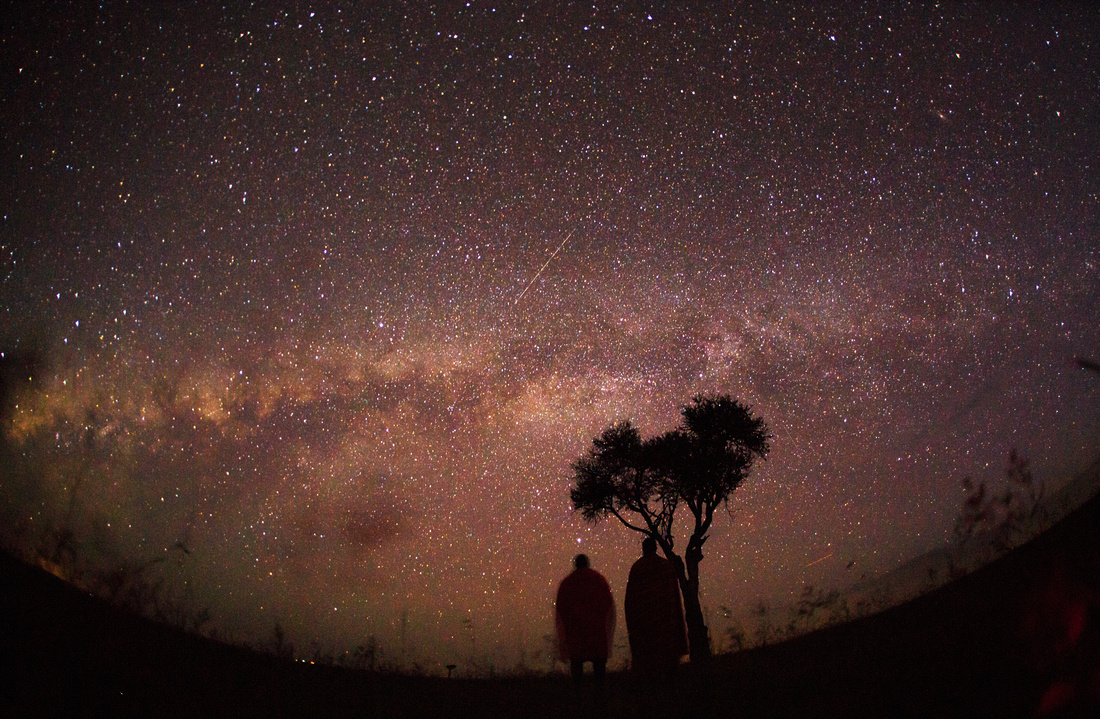

All too quickly, it was back into the vehicles and back down the hill into camp. A quick dash back to the tents to collect the rest of our gear, everyone else who didn't fancy the early start, and out again. A detour to spot some crested cranes against the slowly rising sun followed...
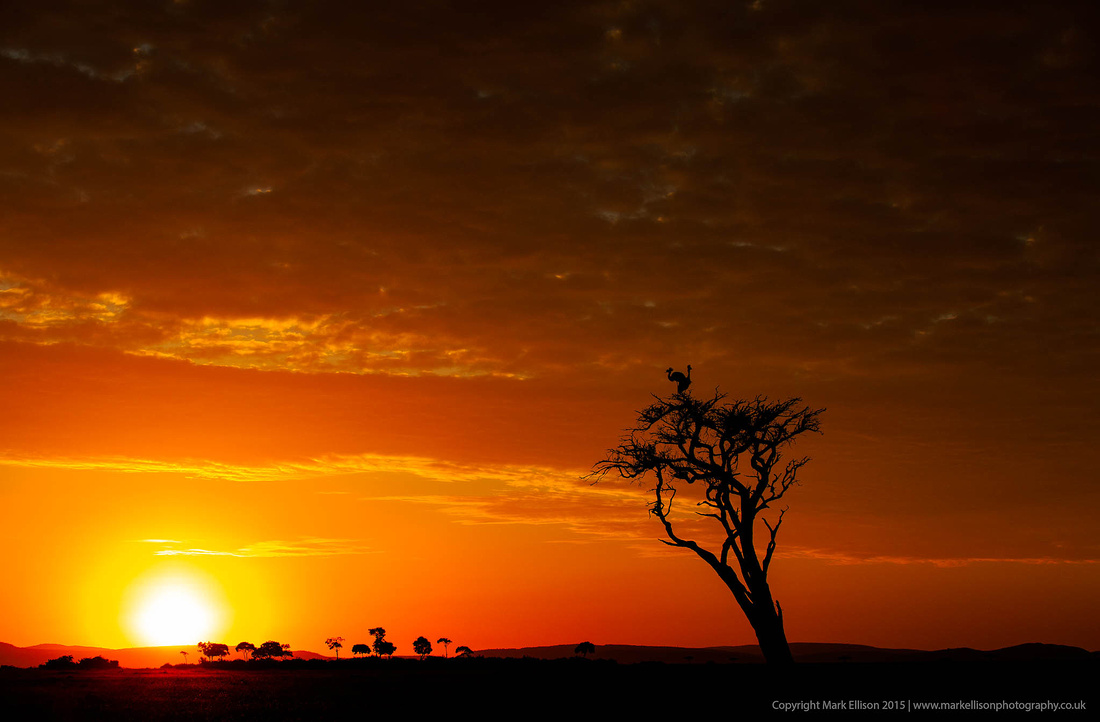
 Before the highlight of the morning being a wonderful reunion with Amani against a glorious dawn sky.
Before the highlight of the morning being a wonderful reunion with Amani against a glorious dawn sky.
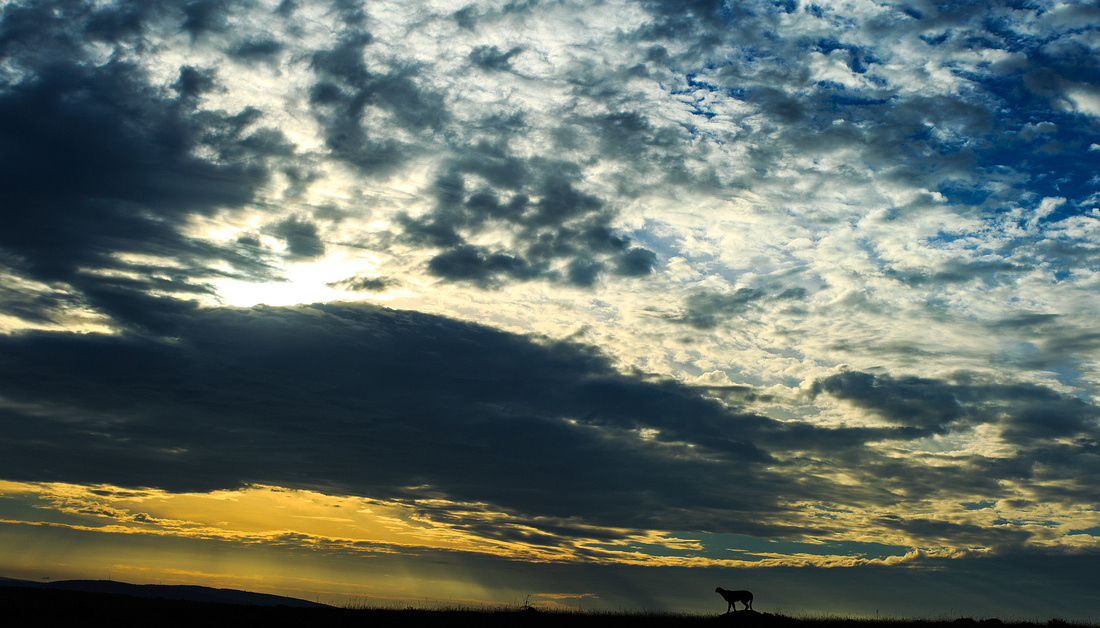

That afternoon was all about the Gold Leaf pride of lions, as we followed them around, which I may well cover in another post. But the day wasn't over with surprises yet. Seeing the clouds rolling in, we made the bold decision to leave the lions and chase the oncoming storm. A frantic quarter of an hour ensued as we desperately tried to find a giraffe or elephant to put between us and the storm clouds, but in the end we made do with zebras and wildebeest. And they stepped up to their role very well indeed!
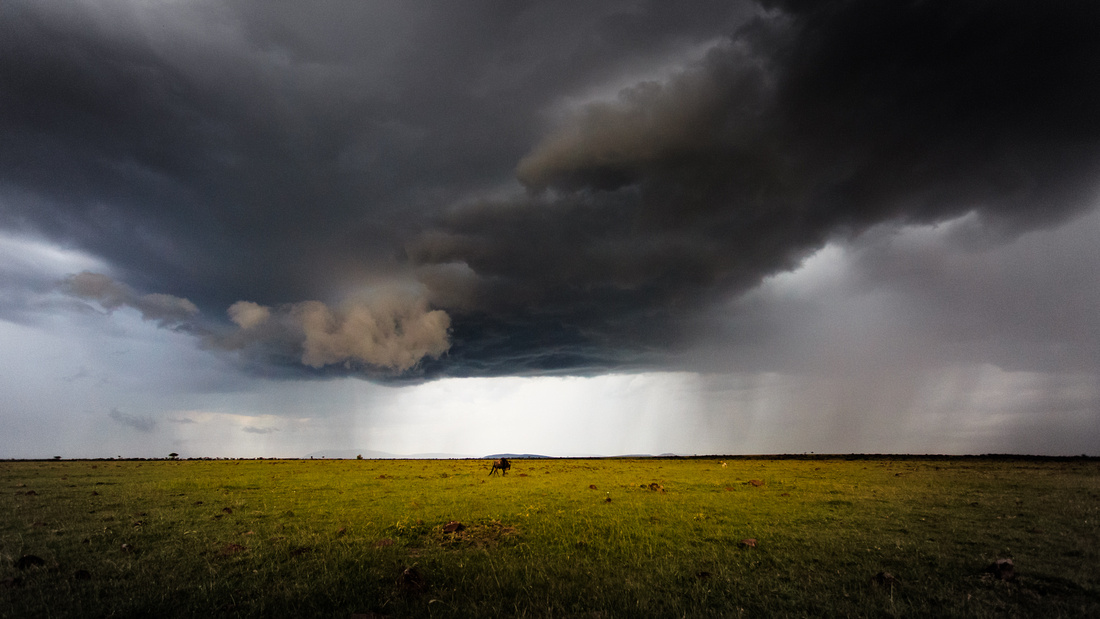



About five minutes after this was taken, the storm clouds hit us and the most torrential downpour I've ever been in. The road back to camp turned into a river and our guys did a remarkable job to get us back without getting stuck. Beers were well and truly enjoyed that evening.
Back to the Mara - Part 3
As a slight aside from my recent posts about my trip to Kenya this year, I thought I'd use this blog entry to talk less about the experiences and the pictures that resulted, and instead a bit about practical stuff. Hopefully at least some of this info might be of use to anyone planning a trip.
Kit, and transport of kit
So, first of all, you've got to get there. It won't come as a surprise to any photographer that camera kit is heavy. Wildlife photography kit especially so. A 300 or 500mm prime lens can easily weigh 4 or 5 kilos and when your carry-on limit is usually around 10-12 kilos then you're quickly hitting your limit. So you're going to want to pack clever.
My camera bag of choice, when I'm needing to haul a lot of kit and want to take it on a plane, is my Tilopa, from US company F-Stop. F-Stop bags are essentially conventional rucksacks on the outside, with an internal frame and padded container for your fragile bodies and lenses. It has the advantage of not shouting that it's a camera bag, so with a bit of luck you're less likely to be asked to weigh it at checkin (hopefully...)
Nonetheless, I do try to pack non-essential kit in my hold luggage, to try and manage the weight.
On this trip, I flew from Heathrow to Nairobi with Keyna Airways. When we went out, hand luggage allowance was 12Kg, so you'll need to employ some tactics. All I'd say, is that if you have pockets, consider using them...
I was a bit more concerned about our internal flight. We'd been told that it was 15Kg maximum for all luggage. However, when we got to Wilson airport in downtown Nairobi, all our luggage from our group was put onto one massive scale, as they were only concerned about the total, so it wasn't a problem at all.
I took with me two Canon full-frame DSLR bodies, a 300mm f2.8, 70-200 f2.8, 17-40 f4 wideangle, 15mm fisheye, 1.4x and 2x extenders for the long lenses, Canon S95 point and shoot, about 80Gb in memory card storage and multiple batteries for each camera. I also packed a netbook PC and external hard drive for backing up images after a day's shooting. Tripods aren't recommended as you can't use them in the vehicles, so I took a small Manfrotto table-top tripod, just in case.
My netbook isn't great for processing images but it's very light, which was the prime requirement for me. If you want to process images out there, make sure your machine is powerful enough to do that.
Kicheche
Okay, so you've got there. What next? We stayed with Kicheche, who have a few camps, with ours being Kicheche Mara, in the Mara North Conservancy. I'd very much recommend seeking out a camp in one of the conservancies. The reserve itself is a bit of a free for all, with often lots of vehicles at an animal sighting, some of which don't have the animal's welfare at the top of their list, let's say.
One of the reasons the conservancies were set up on the edge of the main reserve was to get away from that. Vehicle numbers are strictly controlled and as a consequence it feels more natural and genuine.
Kicheche are geared up to cater for photographers. This is one of their many customised Landcruisers we used. Usual occupancy was four photographers per vehicle and, as you can see, everyone got a window seat. The sides and the roof are completely open, providing great freedom of movement and each seat has a table with beanbags on which to rest your long lens.
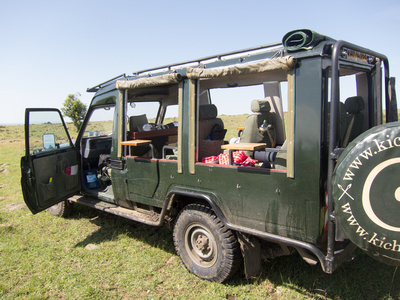

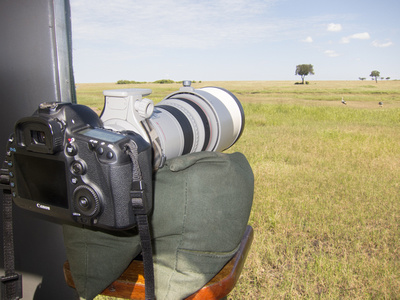

Photographic notes
You very quickly fall into a rhythm when you've been out there for a day or two. Whenever we set out for a game drive, my usual approach was to set one camera up with the 300 f2.8 and 1.4x converter, giving me 420mm range for any animal encounters, and the other camera with the 17-40 for landscape options (or animals in landscape setting, as often was the case). My 70-200mm was generally to hand, ready to replace the 17-40 if I needed a closer shooting option.
My preference is for aperture priority shooting, so I would set up the long lens camera usually with aperture either wide open or 1 stop down, then ride the ISO up till I got a shutter speed I was happy with (usually starting around 3200 when setting off at dawn, and gradually pulling it down as the sun came up). If doing any landscape shots with the other camera, I'd duplicate those settings onto the other camera whenever I'd finished, in case I needed to quickly switch to it.
Tips and Tricks
A few tips and tricks that I learnt...
Sunsets and su
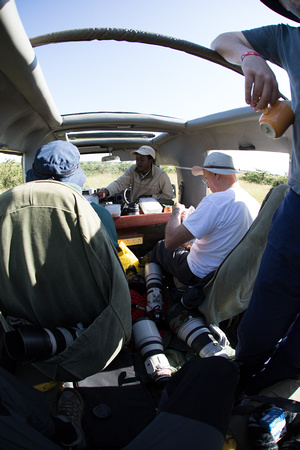
 nrises are quick! Being on the equator, the sun doesn't take it's time in charging up and down the sky, so don't hang about. And if you can get a silhouette of a giraffe against the skyline, all the better.
nrises are quick! Being on the equator, the sun doesn't take it's time in charging up and down the sky, so don't hang about. And if you can get a silhouette of a giraffe against the skyline, all the better.
As you'll see from the photo on the left, space with four photographers and bunch of long lenses can be at a premium, so try not to take your big camera bag into the vehicle - better to decant what you need for the day into a smaller bag and take that. You'll have much more freedom to move around when the action starts.
Keep a spare battery and empty memory card to hand - for each camera.
On a similar note - definitely take two camera bodies. It means you won't need to switch lenses quite as quickly, you've got a backup in case something goes wrong etc.
If you've got a rain cover - take it. The Kicheche vehicles could all be covered over when it starts to rain, but often that can make for great shooting opportunities, so you want to keep going if you can.
Don't fall into the trap of shooting the same photo over and over. If you've got a banker, do something different - spin the shutter speed up and down - for some slow panning, zoom in and out to put animals in context etc.
Very often, unless you're lucky enough to have sole use of a vehicle and guide, you'll be with a group, and you may not have the ideal spot at every sighting, but look around - there's always a photograph to be found.
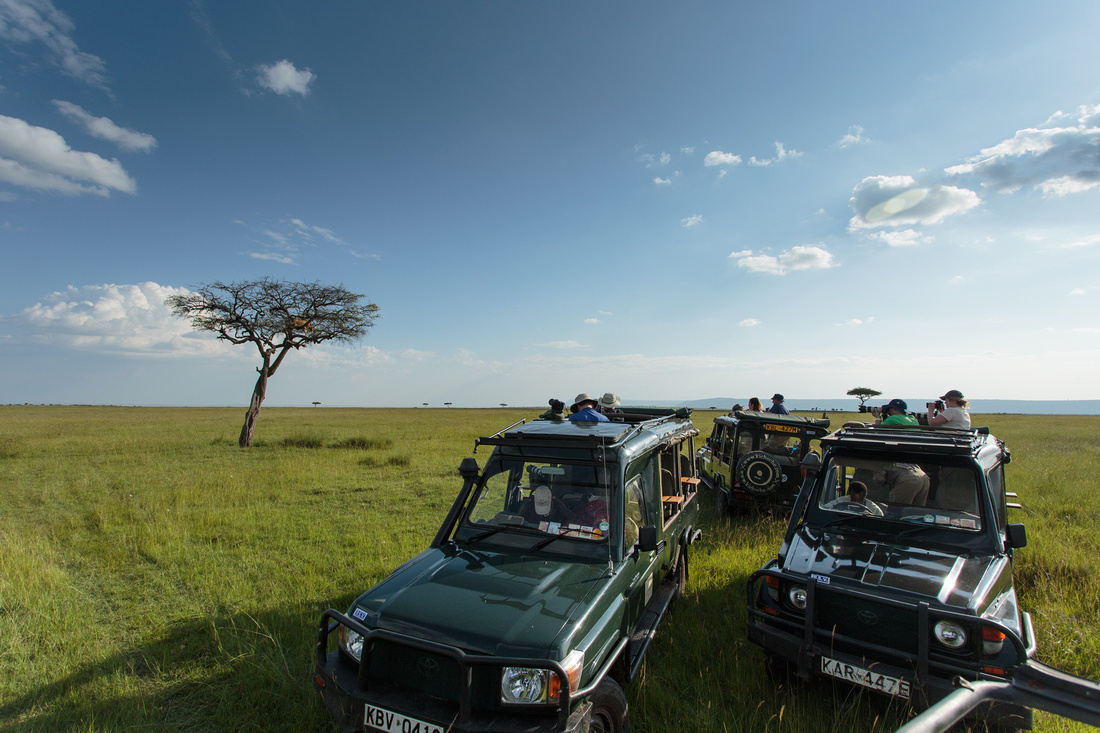

Would I do anything different?
I think when I go again (when, not if!), there's probably a few things I'd do differently. In no particular order -
- I'd hire the big Canon 200-400 (plus 1.4x extender) lens. Prime lenses are great, but I found myself a bit constrained sometimes, without the scope to quickly zoom in and out for changes in composition.
- I'd take more video. This is something I'd planned to do on this trip, but I still ended up doing less than I'd like. It helps to look back at moving pictures sometimes, for both a reminder and inspiration for the future.
- Try and do more landscape compositions. The skies don't get any bigger than those in Kenya!
- Keep looking for a shot that would be a little bit different...
- In terms of practical stuff, I didn't use my fisheye very much, but it wasn't much weight to take, so not a real problem. I didn't use my polarisers as much as I'd like to though.
- Next time I'd like to take more non-big cat pictures. While rightly so, the big cats are the big attraction - don't overlook the common zebra or impala. There's always a photo to be found, especially as they're often in herds, so you can do funky slow shutter speed stuff or the herd on the move, or a single animal framed by others etc.
Okay, I think that's enough waffling for the time being. I hope this post has been helpful in some way, and if you'd like me to expand on any of these points, or add any further information you think might be useful, just drop me a line in the comments section.
Back to the Mara - Part 2
Following on from my recent post about my trip back to the Masai Mara this year, here's part 2 of this little mini-series.
(Matt - thanks for the comment and yes, stay tuned - I'm thinking about doing a kit and gear post as an aside for part 3 :)
The first of many 5:15am alarm calls heralded our first full day out on the plains. After a quick coffee and homemade biscuits (yes - at that time in the morning!) it was out to the Landcruisers and off into the inky blackness to chase the sunrise. It was less than thirty minutes later that Benja and his Kicheche colleagues located a pair of lionesses with six cubs between them, and a bit of swift off-road driving got us below the ridge with the sun coming up behind them.
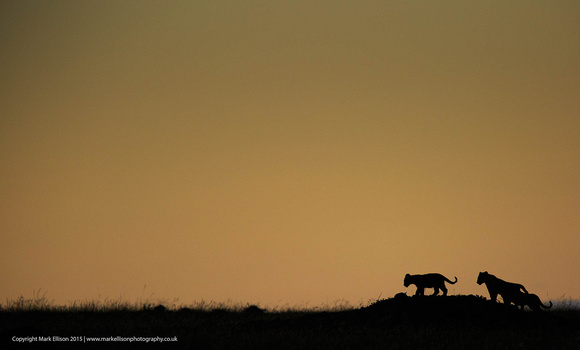
 What followed what would become typical for the remainder of the week - events unfolding quicker that you can point a camera at, as the family made their way down the ridge towards our collection of vehicles as the sun broke over the ridge behind them. Cue lots of swearing, jumping around vehicles and long lenses swinging around and nearly taking each other's heads off as we chased shots that were coming and going before our eyes. The cubs, meanwhile, were having a whale of a time.
What followed what would become typical for the remainder of the week - events unfolding quicker that you can point a camera at, as the family made their way down the ridge towards our collection of vehicles as the sun broke over the ridge behind them. Cue lots of swearing, jumping around vehicles and long lenses swinging around and nearly taking each other's heads off as we chased shots that were coming and going before our eyes. The cubs, meanwhile, were having a whale of a time.
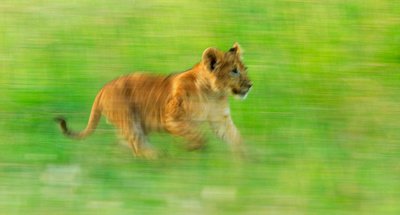

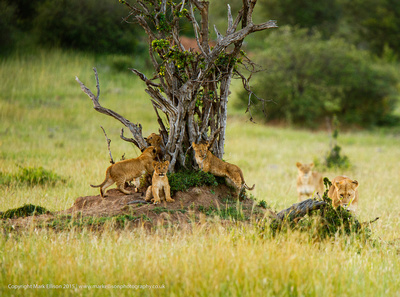

Things finally started to settle down and one of the cubs started heading over to a watering hole. The light was still quite low coming over the hill, so it was a natural choice to underexpose and pick out the highlights in his fur. The elements came together and I got a couple of my favourite images from the week.
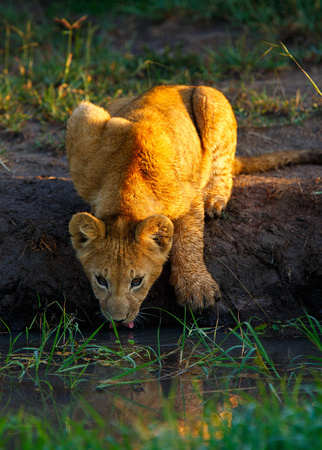

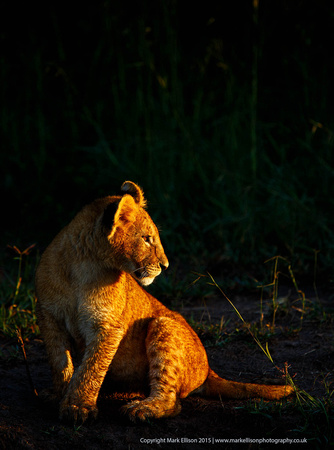

Excitement briefly over with, we amused ourselves with elephants and giraffes for the rest of the morning before heading back to camp for lunch, a review of the morning's work and a rest before the afternoon session. On heading out, we quickly stumbled across Amani, who we'd seen the night before. It looked like she hadn't eaten since last night but as we were watching, she clearly spotted something in the long grasses up ahead. Scanning the bush with binoculars picked out a well-concealed impala, which she then started stalking.
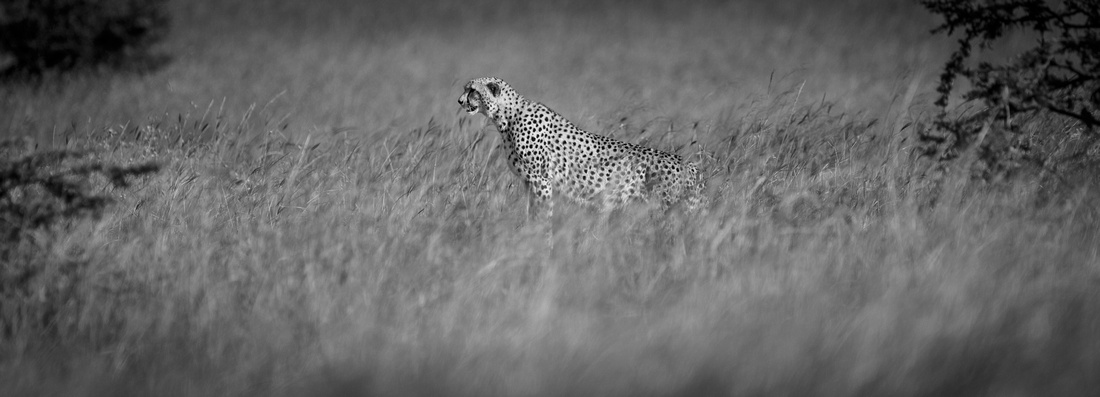

We quickly moved down range of her, both to get ahead of any action as well as to give her some space. It was at that point that Paul, our guide, heard details over the radio of another spotty cat some way off, so decided to leave her to us and to go and investigate. The chase eventually amounted to very little, as the impala made off before she got close, at which point we strapped in and hurtled off to see what the others had found.
Which was a leopard, hunting warthogs in broad daylight from cover provided by a small copse of trees.
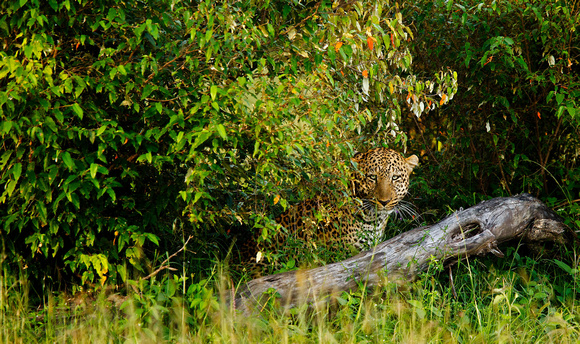
 After having little luck, he started to walk over toward us, getting closer, closer. And closer.
After having little luck, he started to walk over toward us, getting closer, closer. And closer.
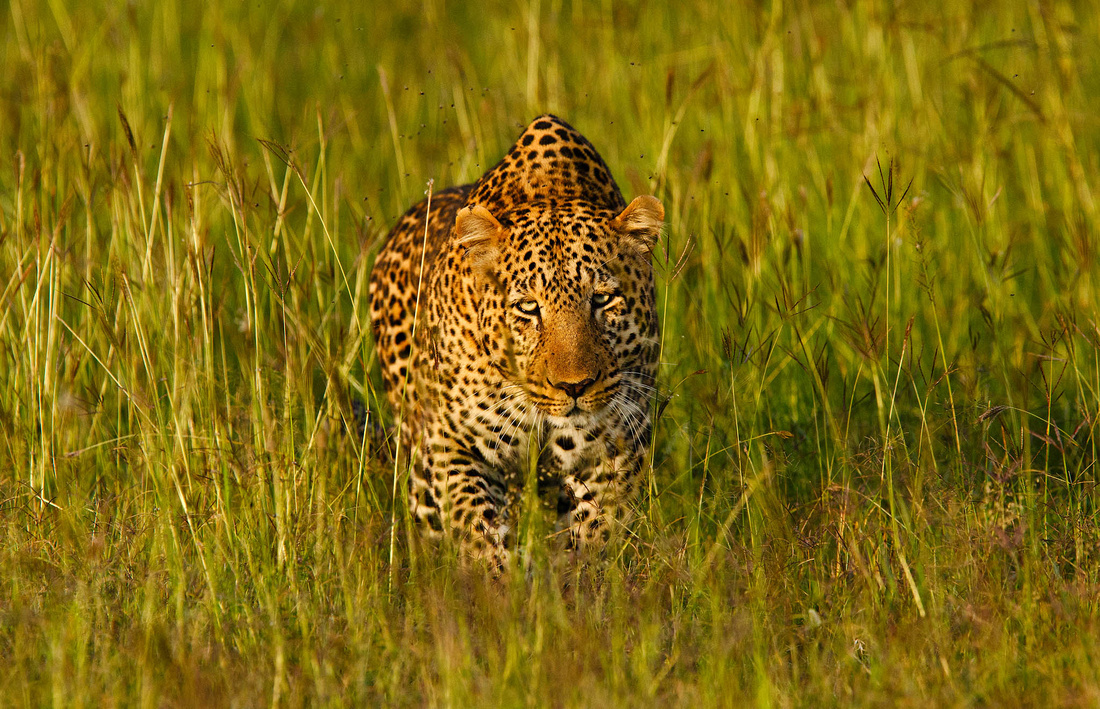
 Eventually he came right up to our vehicle, sitting down by the back wheel where I was sat. Looking up, I then found myself staring down the barrels of my fellow photographers cameras! I think I must have held my breath for a full five minutes. Eventually he sauntered off, casual as you like and was gone. But in the space of a single day, I'd got my third definite keeper image. And then, all too soon, it was off for sundowner beers, back to camp, food, and bed, to dream of what the next day would bring...
Eventually he came right up to our vehicle, sitting down by the back wheel where I was sat. Looking up, I then found myself staring down the barrels of my fellow photographers cameras! I think I must have held my breath for a full five minutes. Eventually he sauntered off, casual as you like and was gone. But in the space of a single day, I'd got my third definite keeper image. And then, all too soon, it was off for sundowner beers, back to camp, food, and bed, to dream of what the next day would bring...
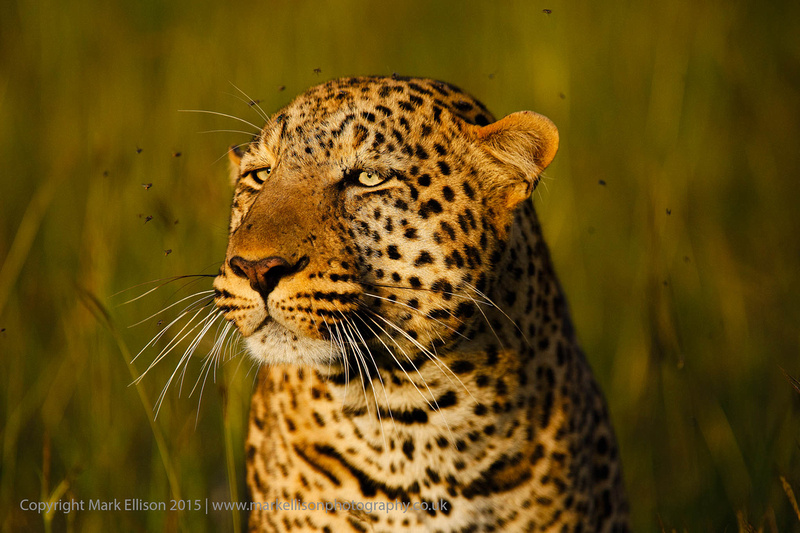

British Wildlife Photography Awards - Highly Commended
Like many wildlife photographers, I do enjoy entering the odd competition here and there, and annual staples are the BBC's Countryfile competition, Wildlife Photographer of the Year (more in hope than any expectation of success!) and the BWPA - British Wildlife Photography Awards.
I've entered the BWPA for a few years, and been fortunate enough to get through the final round of judging on a few occasions. After part careful selection and part gut instinct, I put my submission together earlier this year and fired it off - a good number of images having come from my trip to Shetland last year.
After being told I had two images through to the final judging round this year, I was delighted to hear that one of those was awarded Highly Commended, to appear in the exhibition and the published portfolio book for this year. Due to results being embargoed, I had to sit on the news for a couple of months but was then able to go public with my image - a Kittiwake colony on the Isle of Noss in Shetland:
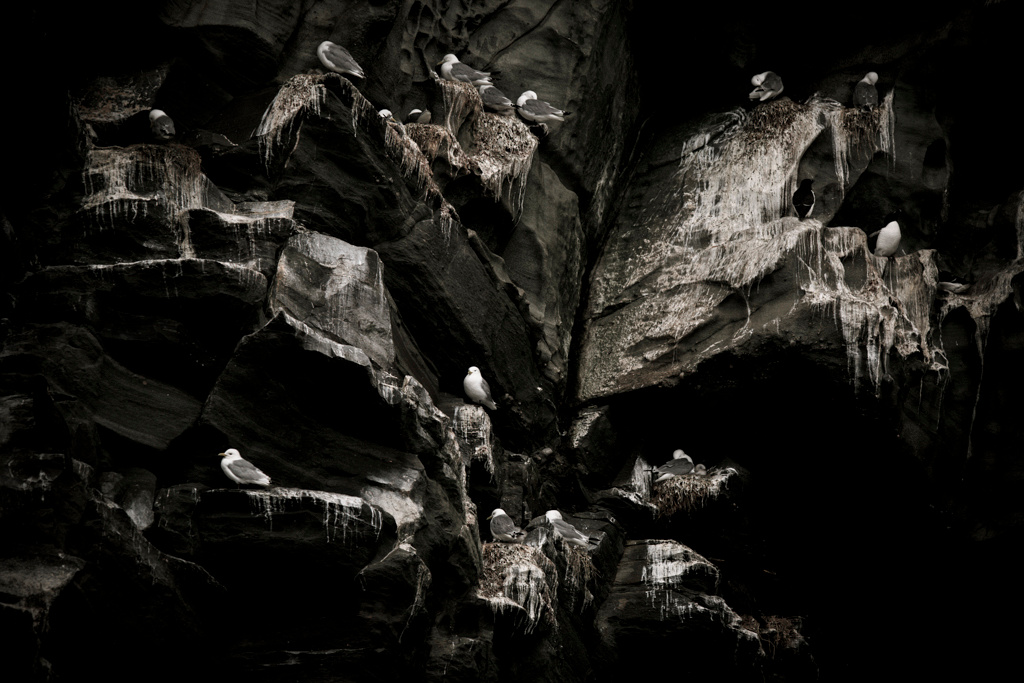

The awards evening was held in central London at the end of September, so having taken the afternoon off from the day job, I jumped on the train at Manchester and arrived at Euston to find that the BWPA had even laid on weather to make us northerners feel at home - torrential rain!
I'd arranged to meet my good friend Peter for the evening, so after a quick catch-up over a pre-awards pint, it was off to the Mall Gallaries.
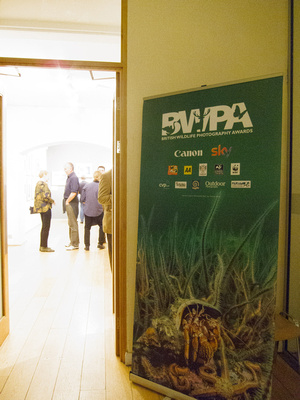
 The evening was hosted by broadcaster and conservationist Mark Carwardine. After having a wander around the exhibition, marveling at the remarkable images on display, together with the obligatory photo-by-my-photo shot, we made of way into the main hall for the awards. A great talk by Mark and the category and overall winners were very much deserved.
The evening was hosted by broadcaster and conservationist Mark Carwardine. After having a wander around the exhibition, marveling at the remarkable images on display, together with the obligatory photo-by-my-photo shot, we made of way into the main hall for the awards. A great talk by Mark and the category and overall winners were very much deserved.
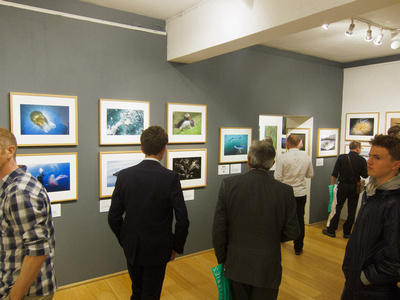

I collected my copy of the portfolio and then, all after a final look round at the talent on display, it was off out in the (fortunately now dry) London evening for food and a final pint with Pete before heading back up to Euston, the last train out of town and finally getting back in to Manchester shortly before 2am. A great evening.
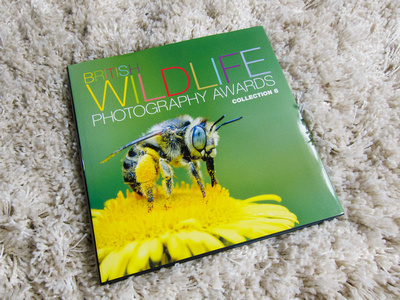

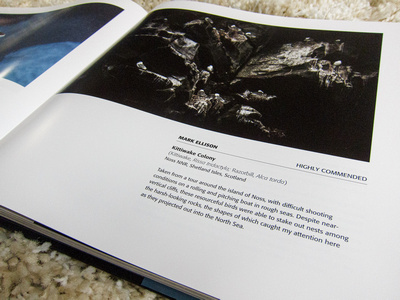

Just in case anyone's interested, I've included below a selection of the other images in my submission for this years awards that didn't quite make the cut.
